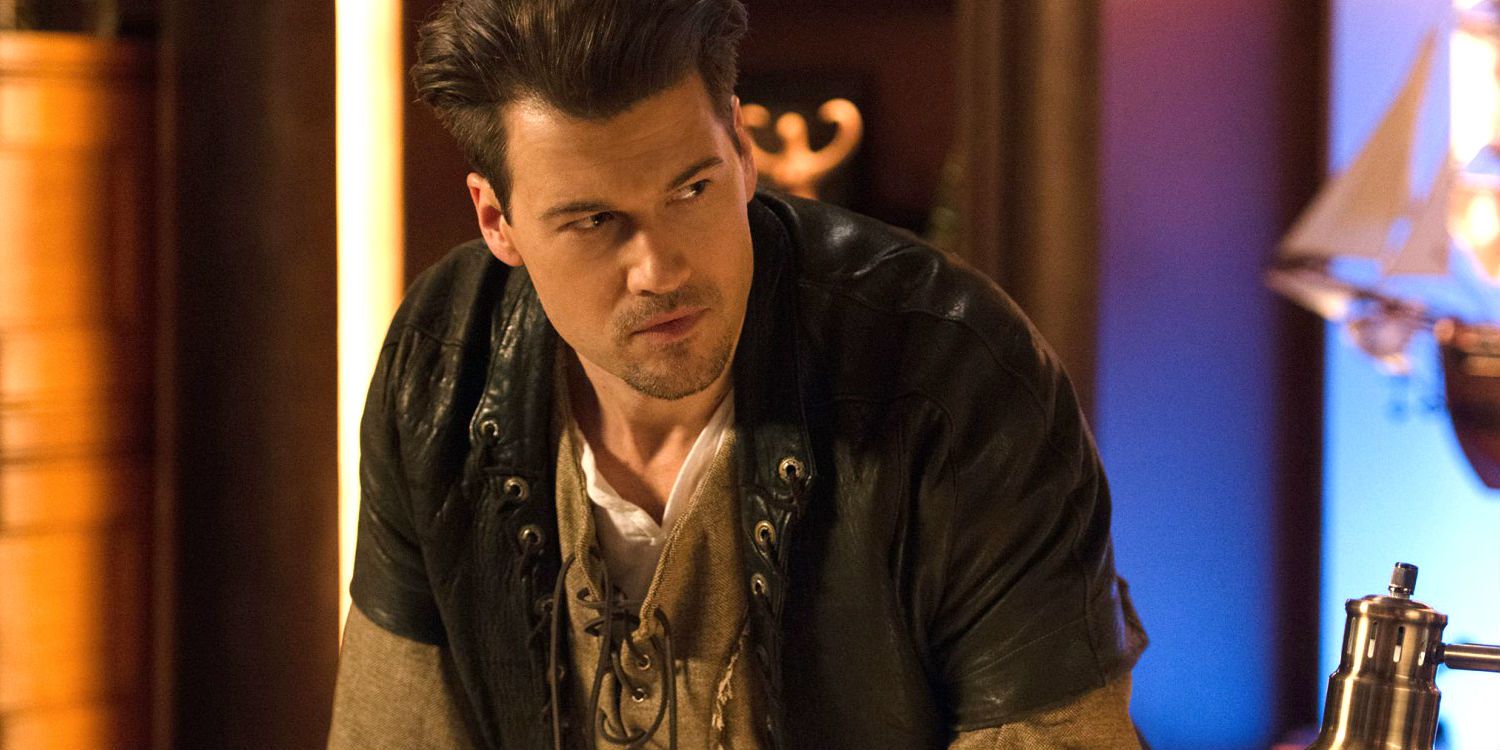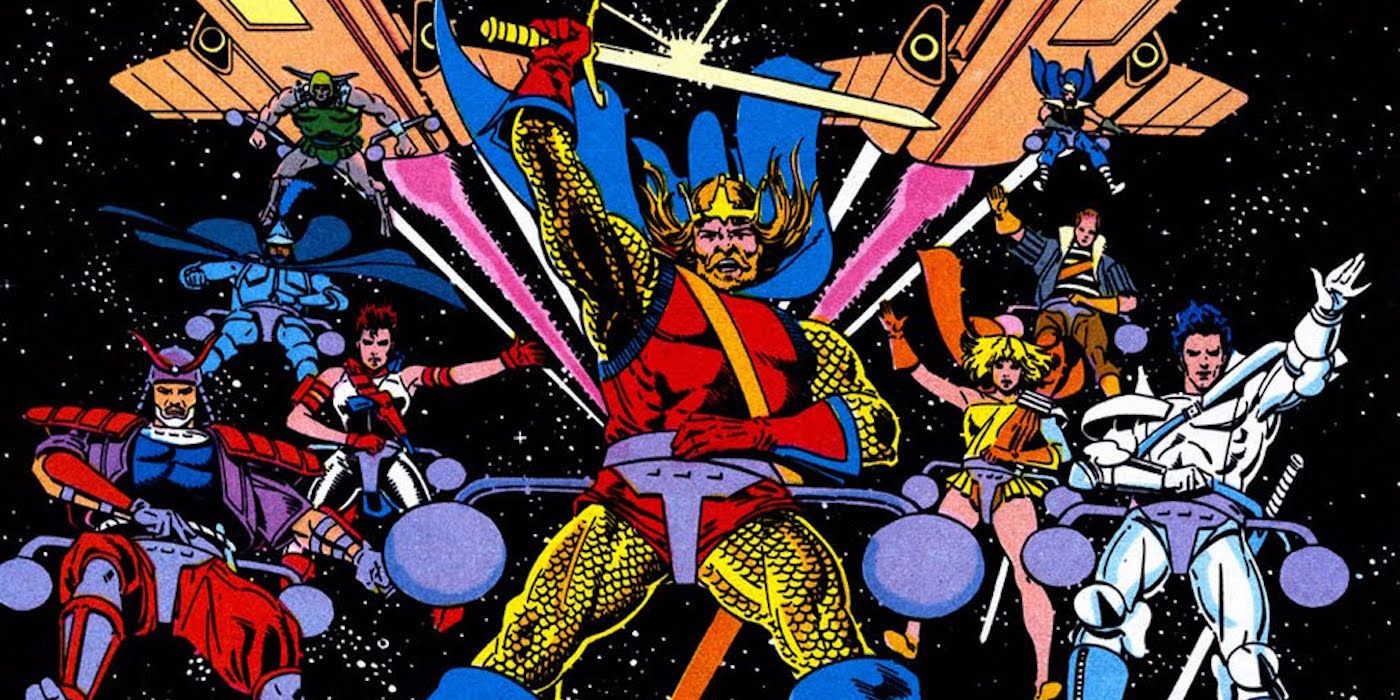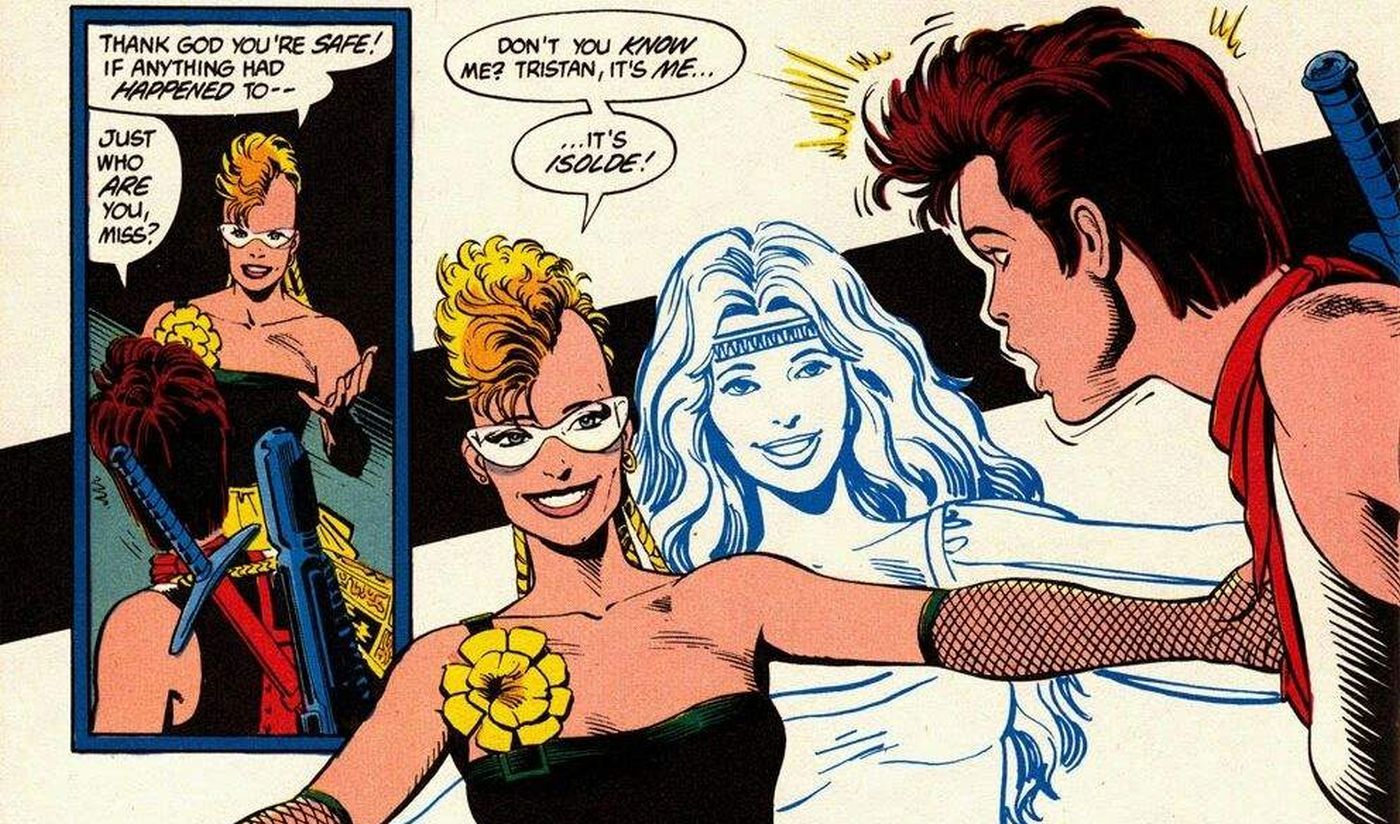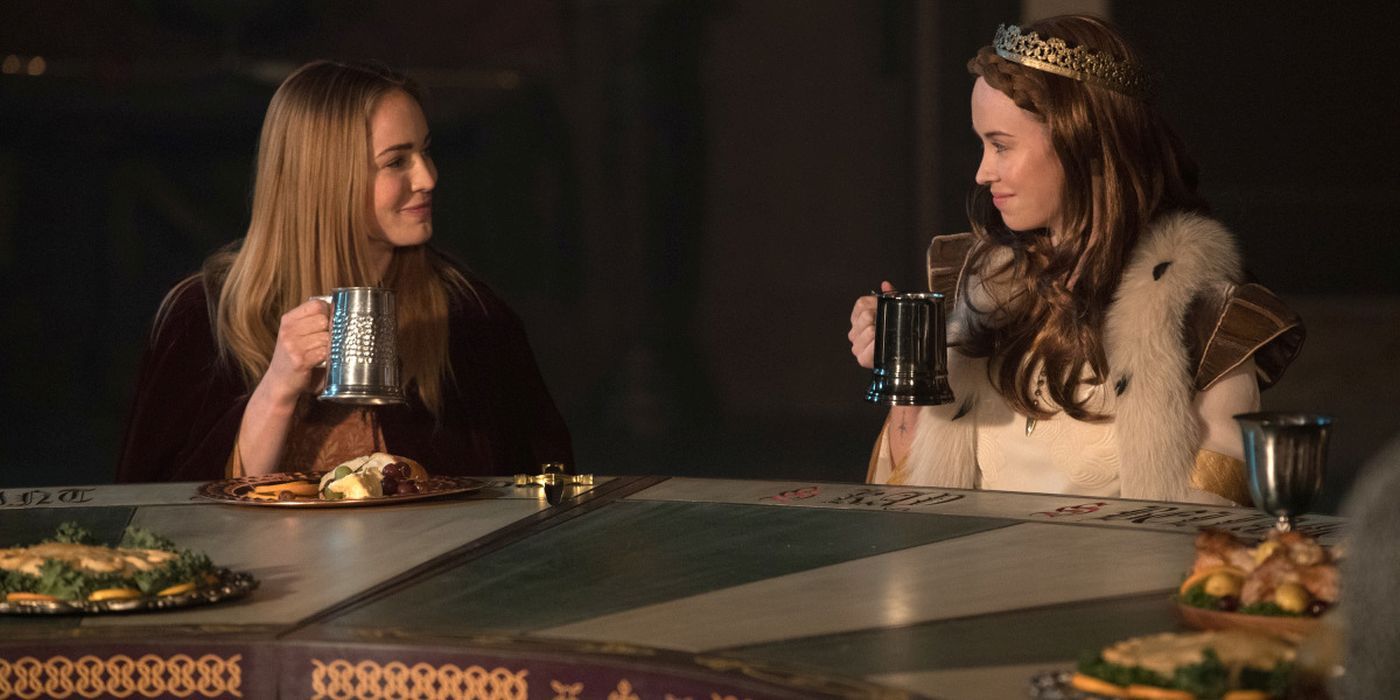Time is the raison d'etre for DC's Legends of Tomorrow. Gallivanting through the time stream putting out fires (called "time quakes" and "time aberrations"), the Legends have thus far visited ancient Egypt, a fascist future ruled by the immortal Vandal Savage, feudal Japan, the American Old West of gunslinger Jonah Hex, Prohibition-era Chicago, and fought in the American Revolutionary War. The Legends have even rescued the burgeoning filmmaking career of George Lucas in the 1960's, assuring Star Wars would exist to inspire generations of movie goers and a couple of the Legends themselves, Nate "Steel" Haywood (Nick Zano) and Ray "The Atom" Palmer (Brandon Routh).
One of the greatest sources of heroic inspiration in all of literature is the legend of King Arthur and the Knights of the Round Table, so it was only a matter of time (sorry) until the Legends of Tomorrow and the Arthurian legend were well met. Though Merlin exists in the DC Universe and a character called the Shining Knight was a member of the Knights of the Round Table, when it came time to send our time traveling heroes to Camelot, the producers of Legends of Tomorrow decided to (very loosely) adapt the 1980's limited series Camelot 3000.
The First Maxi-Series
Camelot 3000 was created by Mike W. Barr and artist Brian Bolland. It was published by DC Comics from 1982 to 1985 as the first "maxi-series" intended for what was then a new and growing direct market of comic book stores. Before the rise of the direct market, comics books were mainly purchased on spinner racks found in newsstands, drug stores, and other retailers. By creating Camelot 3000 as the first series exclusively for the direct market, there were three notable benefits for DC:
1) It would be a "limited series" of only 12 issues with a set ending, as opposed to how most comic books were published to be indefinitely ongoing unless canceled by poor sales or other reasons.
2) It could be printed on higher quality "Baxter paper" as opposed to newsprint, which would enhance the quality of Bolland's artwork for the reader.
3) It would not be subject to the restrictions of the Comics Code Authority, the industry's regulations overseeing and restricting the content published by the major comic book companies such as Marvel and DC. Not being subject to the Comics Code allowed Barr and Bolland to tackle more adult themes and controversial (for the era) topics within the context of their story.
Inspired by a college course in Arthurian literature, Mike W. Barr conceived of Camelot 3000 (originally titled Pendragon) around 1975. Both DC Comics and Marvel received Barr's pitch but neither acted on publishing it until 1982, when DC paired Barr with up-and-coming British artist Brian Bolland, who was best known for his work on Judge Dredd in 2000 A.D. DC moved forward to print Camelot 3000 as its first 12 issue "maxi-series," though the series would take place outside the regular continuity of the DC Universe. To aid in the authenticity to the Arthurian source material, Barr brought on his college professor Dr. Sally Slocum as a creative consultant. Launched in 1982, Camelot 3000 would face numerous delays due to the time required by Bolland to complete his painstaking artwork. The final issue wouldn't be published until 1985.
The Once And Future King
Camelot 3000 begins in a 31st century torn by war. The Earth is in the midst of an invasion by lizard-like aliens from Chiron,"the tenth planet" beyond Pluto. Right away, the story's geo-politics are both satirical and confusing. England, the most important and powerful nation on Earth, is the primary target of the aliens and has fallen. Meanwhile, the United Nations exists in New York City, unharmed by the aliens, which seems to concentrate its efforts in Europe. The UN kidnaps poor people and forces them to undergo mutation into monstrous Neo-Men to fight the aliens. America's President is a gun-toting cowboy dressed in a garish Uncle Sam costume who lives in the US Capitol building in Washington, D.C., which is constantly misidentified as the White House. (Or perhaps the two are simply one and the same in the year 3000.)
Into this bizarre future world, King Arthur is reborn, rising from his crypt beneath Glastonbury Tor. He is discovered by an archaeology student named Tom Prentice, who becomes his squire and later is Christened a knight. Mind you, Arthur wears bright yellow chain mail, a red tunic, and a blue cape, pirate boots, and gloves, and we are shown in flashback that this garish costume was Arthur's royal attire centuries ago. Together, Arthur and Tom travel to Stonehenge to free Merlin from his earthly prison. Once reunited with the ancient wizard, they retrieve Arthur's legendary sword Excalibur from the Lady in the Lake. From there, Merlin uses his magic to locate six of Arthur's Knights of the Round Table, who, unlike Arthur and Merlin, are all reincarnated as 31st century citizens, some in surprising ways.
Guinevere is reincarnated as Joan Acton, a high-ranking UN military commander. This action hero version of Guinevere predates such female heroes as Buffy the Vampire Slayer and Katniss Everdeen of The Hunger Games. Lancelot is Jules Futrelle, a French industrialist and the richest man on Earth. He lives in a satellite castle orbiting the Earth that Arthur renames New Camelot. The reunion of Arthur, Guinevere and Lancelot immediately reignites their fabled love triangle, which has immediate detrimental effects to New Camelot. Rounding out the Knights of the Round Table are Lancelot's son Sir Galahad, who is reincarnated as a Japanese samurai; Sir Percival, who was mutated into a Neo-Man, Sir Gawain, reincarnated as a South African man who leaves his family to join King Arthur; Sir Kay, Arthur's step-brother who ends up betraying New Camelot, and Sir Tristan, who is reincarnated as a woman.
It turns out the evil sorceress Morgan Le Fay is behind the alien invasion of Earth. Banished by Merlin, she lived on the 10th planet for centuries and decided it was time to conquer Earth. The head of the United Nations, Jordan Matthew, is revealed as the reincarnation of Modred, Arthur's son and greatest foe. Together they plot to destroy Arthur and New Camelot in a bewildering series of events that include multiple attacks on the New Camelot satellite, trying to assassinate Guinevere when she and Arthur publicly remarry at the United Nations, and stealing the Holy Grail so that Modred can essentially be impervious to harm in battle with Arthur. Camelot 3000 concludes with the Knights of the Round Table traveling to the 10th planet to stop Morgan and Modred once and for all. Arthur even meets the Queen of the Chiron in a scene that echoes (but predates) Ripley meeting the Xenomorph Queen in James Cameron's Aliens.
Sir Tristan's story is the most eyebrow-raising in Camelot 3000. Reincarnated as a woman named Amber March, Tristan was reawakened to her Arthurian self at her wedding to a man who would later turn into a villainous pawn of Morgan Le Fay. Tristan, who now identifies as his previous male self, is disgusted with the female body he now inhabits. Complicating matters is the awakening of Isolde, his one true love. Tristan falls under the sway of Morgan and is tempted to betray Arthur so that Morgan can restore his male body. Tom Prentice also develops feelings for Tristan, but as Amber. Prentice pleads with him to remain a woman so they can be together. Tristan violently struggles with his gender identity throughout the series. Though still identifying as a man, Tristan ultimately comes to accept his female body and chooses to be with Isolde.
Despite its historic standing in comic book history, Camelot 3000 is relatively little-known and is generally not considered a seminal graphic novel of the era. It is certainly not as widely read or as influential as the famed classics of the 1980's such as Watchmen, Batman: The Killing Joke (also illustrated by Bolland), or Marvel's original Secret Wars maxi-series.
Camelot/3000
Legends of Tomorrow's "Camelot/3000" bears only a passing resemblance to the graphic novel. Fleetingly traveling to the year 3000 in its onset, most of the episode is set in the Isle of Britannia circa 507 A.D. Gone are Morgan Le Fay, Modred, most of the Knights of the Round Table except Sir Galahad, and any mention of aliens. Legends of Tomorrow instead cherry picked just a few elements and decidedly molded Camelot 3000 to suit their creative needs.
Continuing the current race across time between the Legends and the Legion of Doom, represented here by Damien Darhk and Rip Hunter, to retrieve the pieces of the Spear of Destiny, "Camelot/3000" cleverly replaces Merlin with Stargirl from the Justice Society of America. Stargirl used the powers of the blade of the Spear she was charged to protect to alter reality; she created King Arthur and the Knights of the Round Table to help her guard the Spear, which she hid in the blade of the Sword in the Stone, Excalibur. Amusingly, Stargirl's knowledge of 6th century England was limited to what would appear to be a Medieval Times theme park, which is why Camelot on the show is historically inaccurate, to the chagrin of Nate Heywood, the Legends' resident historian.
The illusion of Camelot is more than enough for Ray Palmer, however, who dreamed of the Arthurian legend as a boy. Ray loses himself in this version of Camelot, befriends Sir Galahad, and is eventually knighted as Sir Raymond of the Palms. In the graphic novel, Galahad had a special laser sword called a "raypier" that shamelessly copied the lightsabers in Star Wars. In a simultaneous nod to the comics and to Star Wars, Ray uses his Atom technology to give Galahad's sword an electrified blade, thus Sir Raymond has his own raypier.
Guinevere is also reflective of the character in the graphic novel. The Queen is a warrior who eschews politics. With Lancelot entirely absent from the episode, "Camelot/3o00" substitutes an attraction between Guinevere and Sara Lance(a lot). Their kiss at the end is also another nod to the graphic novel's ending, when Sir Tristan accepts being a woman and sleeps with Isolde. As for King Arthur, though he's married to Guinevere, he is actually in love with Stargirl, so a different sort of love triangle remains in this version of Camelot.
An important final theme the episode preserved from both the graphic novel and from Arthurian legend is what Camelot represents: the noble idea of believing in doing the right thing and fighting for it. King Arthur in Camelot 3000 managed to inspire the people of Earth with his return. Legends of Tomorrow ably captured that same spirit when the Legends joined the Knights of the Round Table in battle against the Legion of Doom. Self-aware enough to admit they were being hokey, "Camelot/3000" was an enjoyable hour of seeing the Legends of Tomorrow getting Medieval.
DC's Legends of Tomorrow airs Tuesdays @9pm on The CW.




